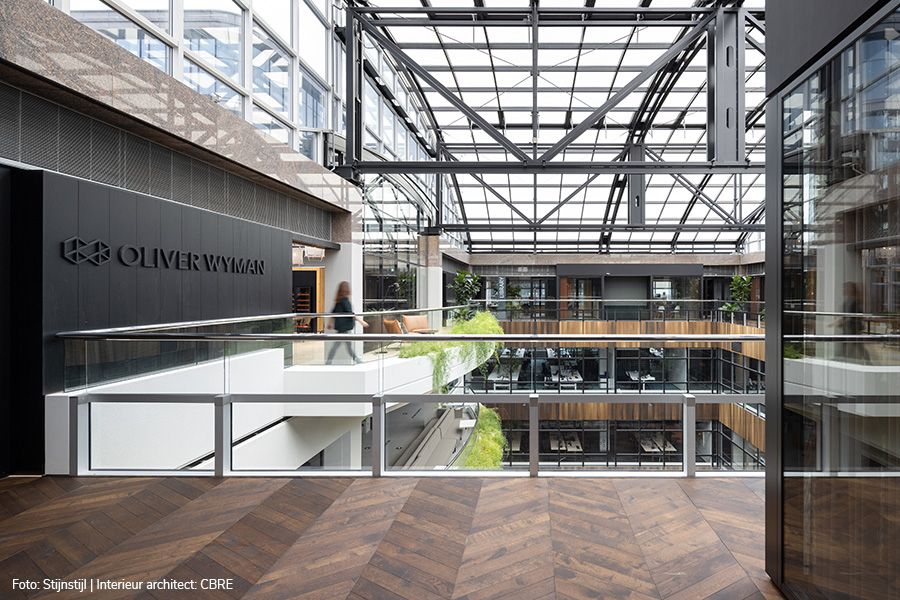70 Percent of European Companies Spend Less than a Quarter of Capital Expenditure on Green Initiatives

- New CDP and Oliver Wyman analysis finds more than half of corporates in key high-emitting sectors report access to capital as a key concern in decarbonization efforts
- Many companies still are not sufficiently decarbonizing at the scale and pace we need today, with just one in five making substantial progress in key areas
- In many sectors, the fundamental economics are not evolving fast enough to make a swift, large-scale switch to greener business models commercially attractive
- Electric utilities, key to electrify and decarbonize transport and heavy industry, could fall €285 billion short by 2030 to reach €1.9 trillion required CapEx in renewable energy
- If more investment cannot be made at pace to meet demand for green products and services, 20% of European businesses expect to lose customers to alternative solutions
A majority (70%) of European companies align less than 25% of their capital expenditures (CapEx) toward transitioning towards a net-zero economy, new analysis by CDP and Oliver Wyman reveals. Meanwhile, one-third of companies overall and more than one-half of high-emitting businesses reported access to capital as a major obstacle.
The report, Get the Money Moving, finds that while more European companies are setting emissions reduction targets and drafting transition plans, just one in five have made substantial progress on implementing key areas of them. These aspects include developing commercially viable green business models for their industries. It emphasizes how levels of capital investment play a critical role in whether a company can drive results or faces obstacles when trying to transition to a low-carbon business model.
The report highlights progress and gaps across various sectors such as automotive, steel, and transport. It finds electric utilities particularly could fall €285 billion short (to reach €1.9 trillion) by 2030 on required CapEx investments to replace conventional generation capacity with renewables – key in the push to electrify and decarbonize transport and heavy industry.
Even as some low-carbon technologies and product lines emerge, commercial business models remain underdeveloped, and in many sectors, government policy has not yet shifted the economic landscape decisively enough in favor of greener products and services. This is seen in the automotive sector, where 59% of companies’ total research and development over the next five years will be invested in electric vehicles, which currently account for only 13% of sales.
If further investment in green products cannot be made at pace, the data shows that 20% of European businesses are expecting their customers will switch to alternative products and suppliers, potentially in other sectors or markets. This comes as companies seek to procure more sustainable goods and reduce value chain emissions, which businesses operating within the EU will need to disclose under the Corporate Sustainability Reporting Directive (CSRD), in force from this year.
For example, the steel industry is responsible for about 5% of carbon dioxide emissions in the EU and is key for the region to reach its goals. But at current levels of investment, green steel supply will be 30% short of meeting demand by 2035.
Other major factors holding companies back from implementing key aspects of transition plans included inadequate development of low-carbon product lines and technologies or decarbonization efforts by suppliers. These were alongside a lack of customer engagement and commitment to cutting emissions.
This implementation gap between concrete business actions and stated climate goals persists despite most businesses reporting they have a transition plan and emissions reduction targets in place. This is according to the analysis based on disclosure data of 1,600 European companies through CDP, the non-profit that runs the world’s environmental disclosure system. These businesses represent 89% of the region’s market capitalization.
The analysis outlines a dilemma for green financing: While many companies need the support of financial institutions to bring projects to commercial scale, the financial sector has demanded proof such initiatives can operate sustainably at this level. Although, 67% of financial institutions disclose through CDP that they are taking active steps to align their portfolios to a 1.5 degree pathway.
The report urges businesses to shift more of their expenditures to sustainable solutions, while calling for policymakers to further build an environment where green initiatives can scale up. It encourages greater cross-institution collaboration across the financial sector to spread risk involving development banks, private equity firms, insurance companies, traditional infrastructure financiers, and philanthropic organizations. This is in addition to leveraging the financial institutions’ own balance sheets.
Companies were considered to be making substantial progress if they scored more than 50% across a five-factor framework: CapEx, product innovation, supplier decarbonization, engaging with customers, and steering the business.
Despite the incoming CSRD also requiring greater transparency on nature in companies’ reporting, the data also shows over half of European financial institutions companies have no plans to protect water security or set targets for preventing further deforestation.
Sherry Madera, CEO of CDP, said: “Sustainable investments are not just a choice, they’re a necessity. With many solutions emerging, this analysis shows significant opportunities for industries to innovate and lead. It uncovers pathways to scale impactful solutions, guiding companies and financial institutions towards a climate safe world. By disclosing high-quality data, companies can better see where to invest to drive their competitiveness, achieve their transition plans and attract capital. Financial institutions can also apply this information to engage and develop funding models that spread risk and enable business innovation, as can policymakers to target improvements for investment conditions in green initiatives.
“CDP data unearths clear insight into where companies are progressing in implementing critical transition plan actions. It’s by harnessing this information, that we can bridge the gap between planning and action, fostering innovation, collaboration, and efficiency across all sectors. Collectively, we can close the implementation gap in time and move the money into an economy that safeguards future generations.”
Related Article: CMA Secures Green Claims Clarity from ASOS, Boohoo, and George at Asda
James Davis, Partner at Oliver Wyman, said: “The green transition in Europe is gaining momentum. This year’s report has unearthed many encouraging signs, with more companies putting in place transition plans and growing investment. Yet most companies are struggling to change their business models at the pace and scale required. The challenge they are wrestling with is that the economics of green business models are typically less attractive and riskier than the existing ones they seek to replace. This also makes it harder for the banks and investors looking to finance the transition, and many of the companies we look at cited access to capital as a key concern.
“Collective action between corporates and financial institutions can help overcome some of these challenges by reducing and sharing the risks. But we also need strong government policy that provides clear incentives for greener products and services, and a stable framework to encourage the kind of long-term investment decisions that are necessary to achieve net-zero.”
The CDP Europe Report will be launched at the CDP Awards Europe 2024 on March 26, held in partnership with the ChangeNOW summit in Paris and Euronews TV.












